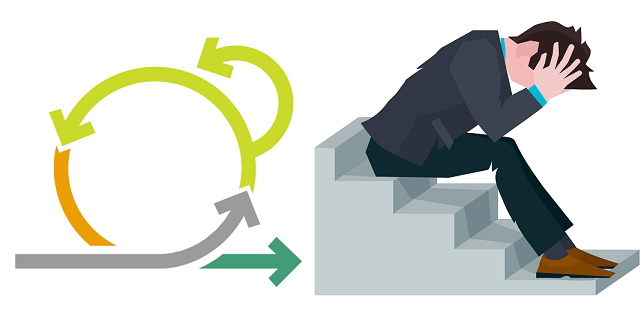8 Causes of Scrum Failure Scrum Masters Should Watch Out For
Published on April 19, 2025
Scrum is a framework that, when adopted in its true spirit, can significantly contribute to the success of a project. However, it's not a silver bullet—if not implemented properly, it will fall short. For Scrum to be successful, things don’t need to be perfect from day one. It is the responsibility of the Scrum Master, as an Agile coach, to help the team identify shortcomings and empower them to improve.
Below are eight common causes of Scrum failure that Scrum Masters should watch out for. Addressing these effectively can help transform a low-performing team into a high-performing one that delivers real value to customers.
1. Lack of a Self-Organized Team
The success of a Scrum team heavily depends on how self-organized the development team is. Often, team members coming from traditional methodologies are used to following instructions and may not be naturally self-organized. They tend to rely on the Scrum Master, Product Owner, or internal leaders to make decisions.
Key traits of a self-organized team include:
- They make their own decisions on implementation and architecture.
- They pull backlog items themselves, based on priorities, capacity, and dependencies.
- They report to each other, not the Scrum Master or Product Owner.
- They proactively address blockers or seek help when necessary.
2. Team Members Not Practicing Scrum Values
Scrum is built on three pillars (transparency, inspection, and adaptation) and five values—courage, commitment, openness, focus, and respect. Without these, a team may appear to function well on paper, but lack the soul of a high-performing Scrum team.
The Scrum Master must help the team understand and embody these values by mentoring and correcting behavior when values are breached:
- Courage: Saying no, owning up to mistakes, and doing the right thing.
- Commitment: Keeping promises and doing one's best to deliver.
- Openness: Promoting transparency in all activities.
- Focus: Concentrating on sprint goals despite distractions.
- Respect: Trusting and valuing each other’s contributions.
3. Diluting Scrum by Adding Non-Agile Activities
Teams with a background in traditional methods often try to blend non-Agile practices into Scrum. This could involve unnecessary documentation, meetings, or processes. While the intent may be to bring in the "best of both worlds," the result is often the opposite. The Scrum Master must educate the team on why sticking to the Scrum framework is essential and intervene when non-Agile practices are introduced.
4. Product Owner Not Dedicated Enough
The Product Owner role is a full-time job that requires balancing stakeholder interaction with collaboration with the development team. Often, senior leaders are assigned this role without freeing up their time. This leads to issues such as poorly refined backlogs and unavailable support for the team.
Warning signs include:
- Not enough refined stories for upcoming sprints
- Absence from Scrum events
- Delayed responses to team queries
- Irregular backlog refinement
5. Product Owner Not Aligned with End Users
The Product Owner should spend time understanding user needs and priorities. A lack of this connection can lead to poor backlog prioritization, which results in teams delivering low-value features.
Look out for:
- Frequent change requests on "completed" features
- No stakeholders in sprint reviews
- Lack of customer feedback
- Uncertainty in Product Owner’s understanding of requirements
6. Weak Product Backlog
A healthy backlog should contain well-refined, estimated, and prioritized items for at least two future sprints. Without this, the team faces confusion and under-utilization during sprint planning.
Problems caused by an unhealthy backlog:
- Limited sprint options for non-cross-functional teams
- Taking up unclear items, leading to disruptions
- Reduced sprint time due to emergency refinements
7. Inappropriate Project Type for Scrum
Scrum is not suitable for all projects. It may not be a good fit in cases such as:
- Fixed requirements that won’t change
- No user feedback available
- Projects with no incremental delivery model
- Highly repetitive tasks without innovation
- Extremely short-duration projects
Scrum Masters should voice concerns if Scrum is applied to unsuitable projects, even if the decision is already made.
8. Not Following Agile Development Practices
Delivering a potentially releasable increment at the end of each sprint requires solid engineering practices. Without them, long-term success is jeopardized.
Recommended practices:
- Test-Driven Development (TDD)
- Continuous Integration & Deployment
- Pair Programming
- Automated Functional Testing
Closing Note
As the Scrum Guide says, Scrum is simple to understand but difficult to master. A team may follow all Scrum rituals and still fail to achieve meaningful outcomes. A smart Scrum Master identifies what's holding the team back and takes proactive steps to build a high-performing, value-driven Scrum team.
